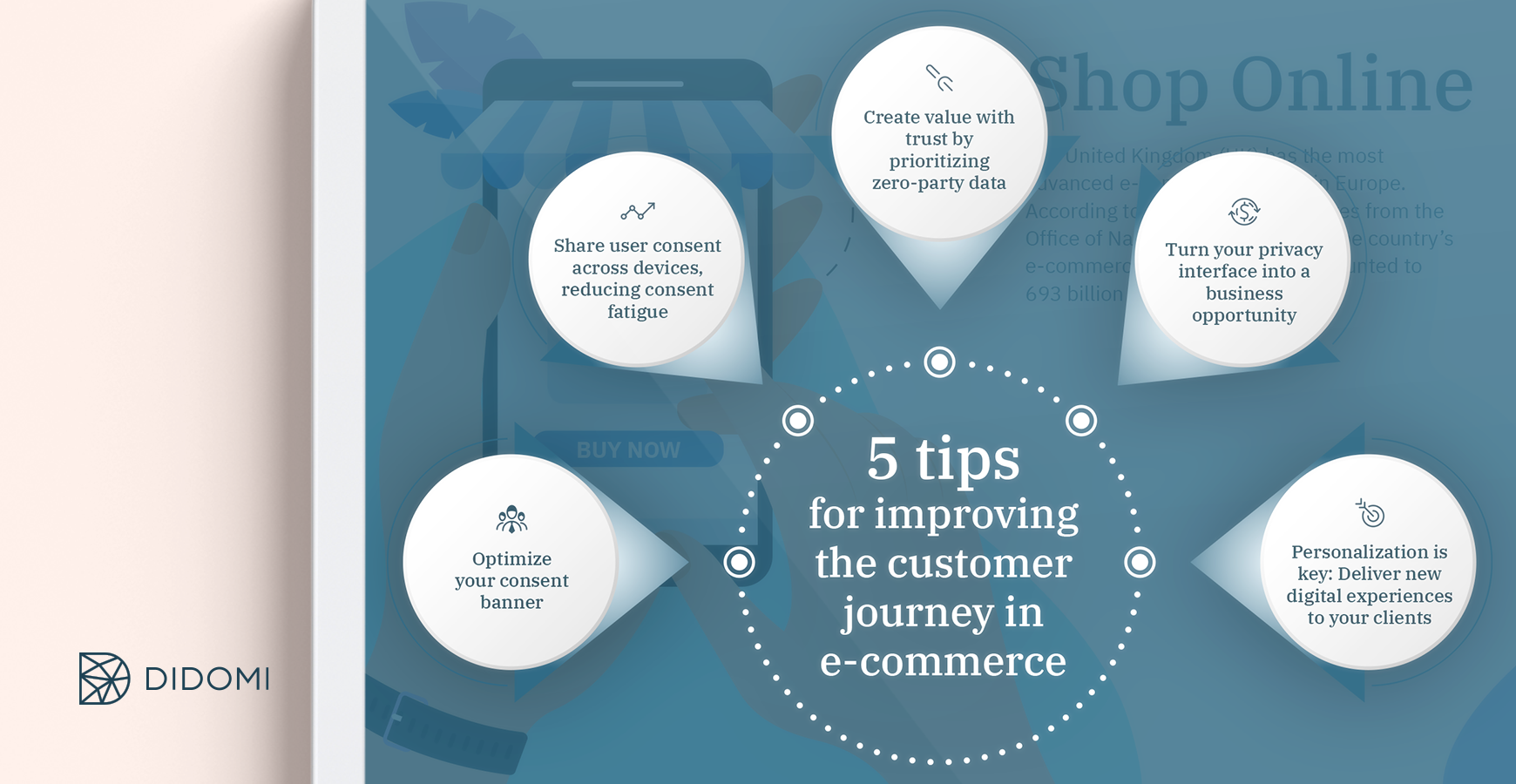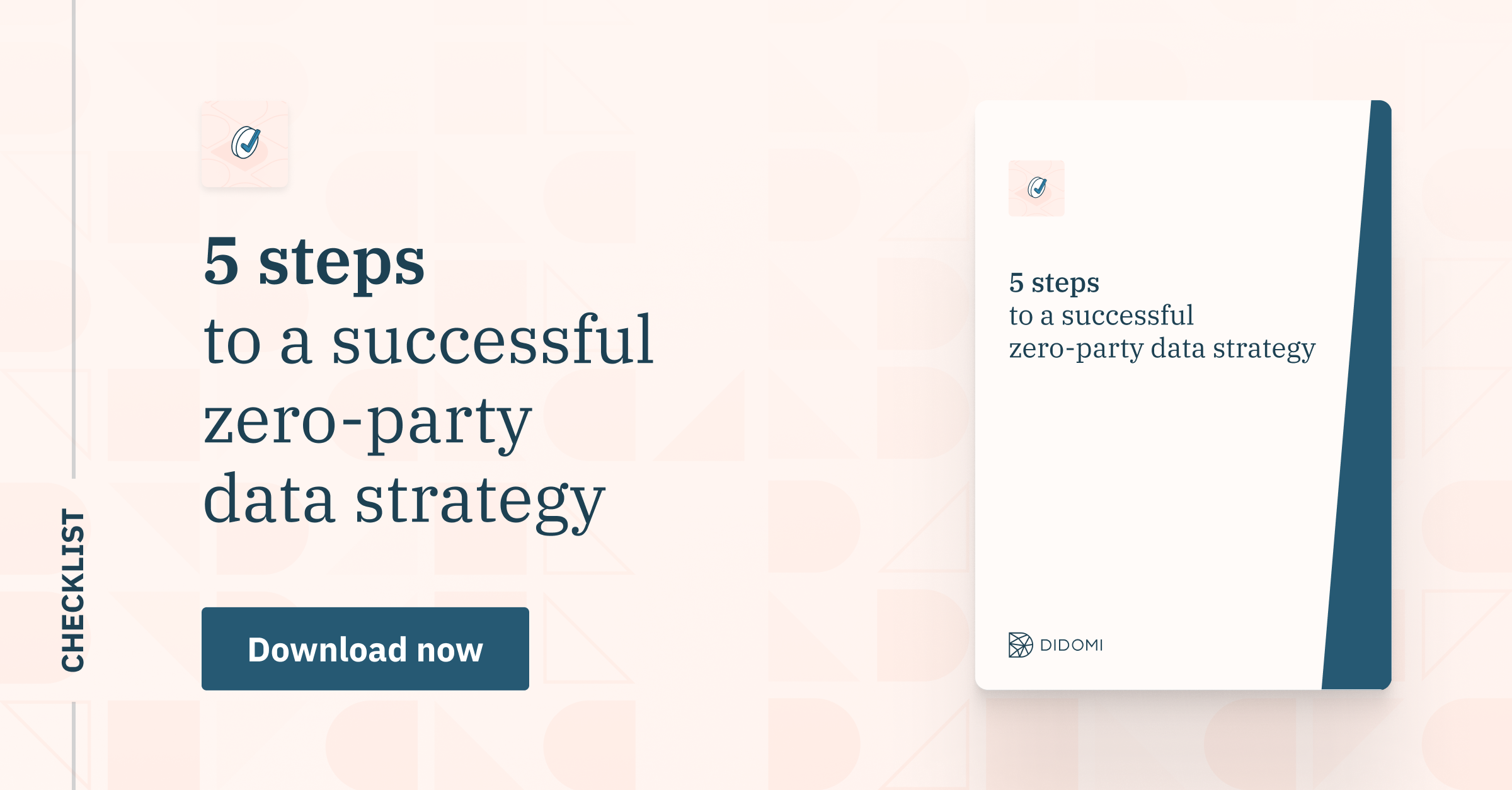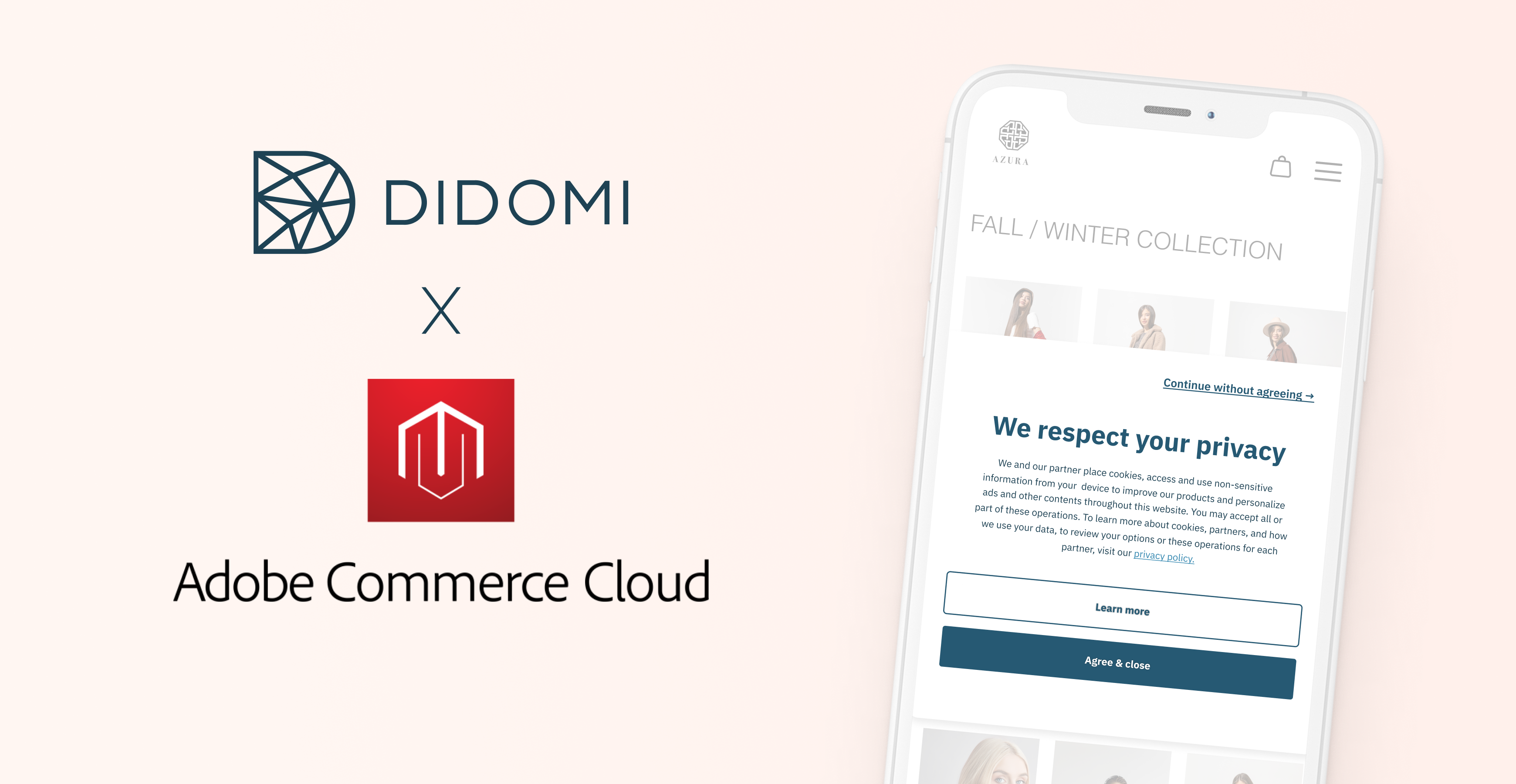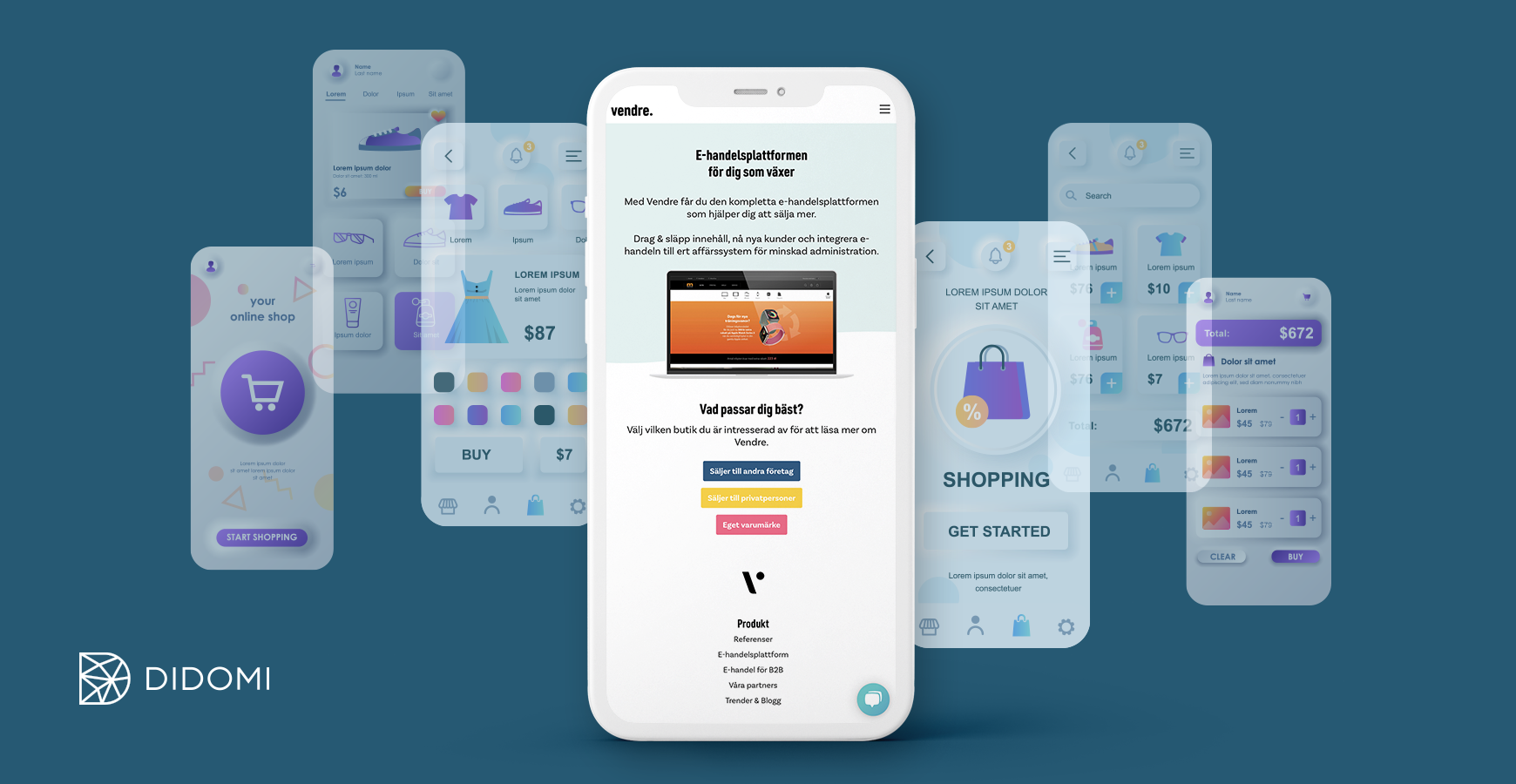The United Kingdom (UK) has the most advanced e-commerce market in Europe. According to the most recent figures from the Office of National Statistics (UK), the country’s e-commerce revenue in 2019 amounted to 693 billion GBP.
But, in a constantly evolving digital ecosystem, the e-commerce industry must remain flexible. With whispers of a UK GDPR and an ominous “cookieless future” on the tip of everyone’s tongues, it’s time for e-commerce players to reverse their thinking and turn privacy into a business opportunity. How? Carry on reading for 5 tips on how to use consent and preference management to improve the customer journey and boost sales.
Summary :
The future of e-commerce in an increasingly regulated digital ecosystem
The privacy landscape is changing, and fast. Privacy is one of the most complex legal issues facing e-commerce ventures today, and notably so in the UK. Why? For three main reasons.
1) The global increase in data protection legislation
The 2018 GDPR acted as a watershed moment for the digital ecosystem. And, post-Brexit, whisperings of a UK GDPR raises questions for the e-commerce industry.
What could this mean? In a regulated landscape, e-commerce players that rely on collecting huge amounts of third-party data for their targeting and personalization campaigns face challenges.
2) The end of the road for third-party cookies
Following Apple, Safari & Mozilla Firefox, Google announced it would stop supporting third-party cookies on Chrome in 2023. 85% of online browsing is carried out on these platforms, so significant change is imminent.
With the impending “cookie apocalypse”, e-commerce players will have to shift their attention towards zero- and first-party data.
It’s time for UK online retailers to think about future-proofing their data strategies.
3) Consumers care about how their data is used
This last point should not be underestimated. Why should the e-commerce industry care about data privacy? Because consumers care.
This is particularly the case in the UK, where 71% of consumers report being concerned about how their personal data is used, in comparison to 68% in France and 57% in Germany.
The Cambridge Analytica scandal and the recent suing of Meta for £2.3bn in the UK have left their mark on British consumers. Put simply, Brits are worried about company data practices.
If the e-commerce industry wants to win consumer trust, and business, it’s going to have to change its stance towards data privacy.
5 tips on how to improve the customer journey
Recent European-wide research has proven that around two-thirds of consumers modify their purchasing decisions in line with supplier privacy commitments.
If e-commerce players do not begin the transition towards a more privacy-first approach, they risk their business metrics taking the hit.
How can the e-commerce industry demonstrate transparent data practices? How can they, in fact, turn privacy into a business opportunity?
Here are Didomi’s 5 top tips, going all the way from consent to basket :

1) Optimize your consent banner
First impressions count. Especially in e-commerce, where bounce rates are usually around 47%. Marketers spend countless hours finetuning their website homepages to optimize user journey and propensity to purchase.
But why do they so often forget about their consent notice, the very first touchpoint?
A consent banner is your first chance to show your user you care about their data. And, in personalizing and optimizing this banner, you’ll notice higher consent rates.
Take a look at the Didomi Consent Management Platform (CMP) for how to translate this approach into your tech stack.
2) Share user consent across devices, reducing consent fatigue
We get it. The explosion of cookie pop-ups is disruptive to the e-commerce user journey.
From a user perspective, it’s bad UX. From a business perspective, a low consent rate has a direct impact on analytics, and a high bounce rate can be devastating for website conversion.
What if we told you you could unify user experience, sharing consent across devices so a user would have to make their consent choice once and only once? This is a Didomi feature we call cross-device.
With the right tools in place, data privacy can be frictionless, actually boosting user experience. Find more information about the Didomi cross-device functionality here.
.png?width=1740&name=Blog-hero-580x300-crossdevices-DE%20(1).png)
3) Create value with trust by prioritizing zero-party data
Does your data strategy rely heavily on third-party data? If your response is yes, your data strategy is skating on thin ice in the current digital ecosystem.
In a changing privacy landscape, zero-party data that a user actively shares with you will prove fundamental to a successful data strategy.
To find out more about how to implement a successful zero-party data strategy, download our checklist here.
Not only will this ensure your data strategy is future-proof in a regulated landscape, it will also foster a relationship of trust with your consumer.
84% of consumers say they want more control over how their data is being used. The relationship between privacy and trust is a two-way street. If businesses prove themselves to be trustworthy through transparent privacy interfaces, users are more likely to trust the company and thus engage more, giving more data.
You could call it a win-win situation. This is why the e-commerce industry should take notice.
4) Turn your privacy interface into a business opportunity
How can you collect this all-important zero-party data? It’s time to turn your privacy interface into a business opportunity.
What does your privacy interface currently look like? A simple opt-in vs. opt-out?
Instead, why not ask your users:
-
Their likes and dislikes;
-
Their topics of interest;
-
Their communication preferences (channels, frequency etc.).
As such, consumers are less likely to opt-out, and more likely to give crucial insights into their preferences: invaluable data for successful marketing campaigns and customer retention.
Take a look at the Didomi Preference Management Platform (PMP) for how to translate this approach into your tech stack.

5) Personalization is key: Deliver new digital experiences to your clients
Use these crucial insights gathered in tip number 4 to personalize your marketing campaigns like never before.
71% of consumers feel frustrated when a shopping experience is impersonal. Use the da ta gathered through your newly improved privacy interface to target your offering depending on your clients interests and communication preferences.
Displaying personalized content at the right time to the right people will improve customer service, increase customer engagement, and boost propensity to purchase, or repeat purchase. Especially when this system operates on a foundation of trust.

Generating revenue with a privacy-first approach
Adopting a “privacy-first” business model will deliver a measurable return, not just in reputation protection and avoidance of fines, but also in increased sales and profits for your e-commerce business.
Didomi builds technology to help companies put their users in control of their personal data. By doing so, our clients generate trust and lay the groundwork for privacy-conscious growth.
Among its wide range of products, Didomi offers a Consent Management Platform (CMP), which collects billions of consents every month, and a Preference Management Platform (PMP), which gives users granular control over their communication and data preferences.
Make sure that your e-commerce brand is relevant to your audience and focuses on redefining your relationship with your users, creating value with trust.




.png?width=3600&name=E-commerce%20Whitepaper_Socials_VF%20(EN).png)






